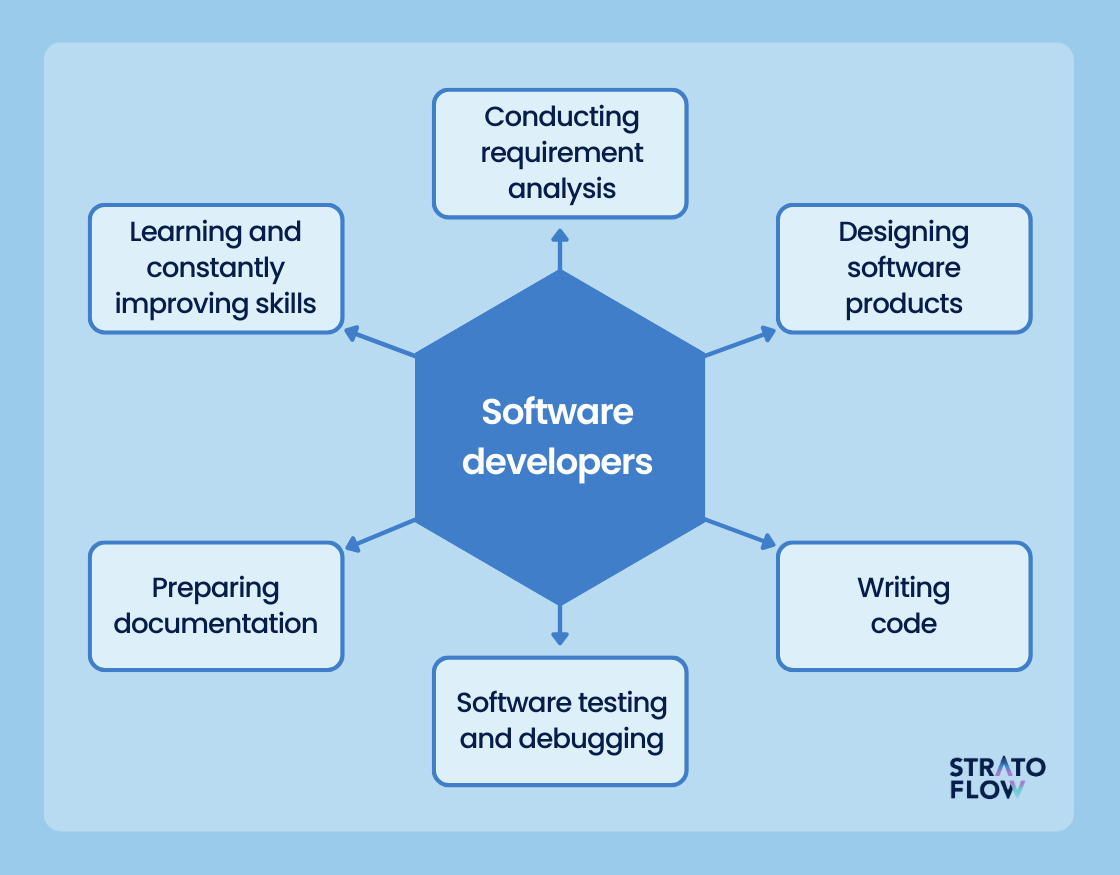Discover the Benefits of Nearshore Software Development for Your Team
Discover the Benefits of Nearshore Software Development for Your Team
Blog Article
Committed Developers vs. In-House Teams: Which Is Right for You?
The choice in between utilizing specialized developers and preserving an internal team is a considerable one that can affect the trajectory of your projects and overall service technique. Committed developers give a degree of versatility and specialized experience that can be advantageous for particular, temporary campaigns. Conversely, internal teams contribute to a cohesive firm culture and a nuanced understanding of long-lasting objectives. By taking a look at important aspects such as budget, task range, and wanted control, you can better determine which technique aligns with your business needs. The implications of this option extend beyond prompt outcomes-- take into consideration the broader effect on your organization landscape.
Comprehending Committed Designers
The expanding need for specialized abilities in the tech industry has caused the emergence of committed developers as a practical option for lots of companies. These specialists are generally acquired on a task basis, permitting firms to leverage particular know-how without the long-term dedication associated with full-time hires. Dedicated programmers are frequently embedded within a client's team, offering flexibility and scalability to satisfy task needs.
This version permits companies to access a worldwide skill pool, which is particularly advantageous in a swiftly evolving technical landscape. Devoted designers can be sourced from different geographical locations, ensuring that firms can locate the ideal capability at affordable rates. They frequently bring a wealth of experience and expertise, having worked on varied jobs across various markets.
Furthermore, dedicated programmers can focus exclusively on the jobs at hand, enhancing performance and effectiveness. They are geared up to integrate flawlessly into existing process, teaming up very closely with internal teams to accomplish task objectives. This method not only lowers the burden of recruitment and training however also permits companies to remain dexterous, adapting promptly to changing market demands and technical improvements.
Advantages of In-House Teams

Moreover, internal groups often tend to have a much deeper understanding of the firm's goal, worths, and goals. This positioning can boost staff member involvement and inspiration, as staff member feel a lot more linked to their job and the company's success. In addition, having a committed internal group permits much better positioning of purposes and methods, as these participants are regularly focused on the company's top priorities.
Internal groups likewise help with quicker decision-making procedures, as they can react much more rapidly to changes and obstacles. The well established partnerships and knowledge with firm protocols permit streamlined workflows and decreased miscommunication. Inevitably, the combination of a cohesive culture, placement with business objectives, and reliable communication makes in-house groups an important asset for several organizations, particularly those aiming to cultivate long-lasting development and advancement.
Cost Factors To Consider
When assessing price considerations, both committed designers and internal teams present distinctive monetary effects for organizations. Involving dedicated designers generally entails a pay-per-project or hourly rate version, which can be affordable for organizations with varying job needs. This method enables flexibility in scaling resources up or down, guaranteeing that visit firms only pay for the solutions they require.
On the other hand, in-house teams require dealt with costs, consisting of wages, benefits, and overhead expenses such as workplace space and devices. While this design supplies greater control and immediate accessibility of sources, it might bring about higher long-term expenses, especially if the workload does not validate a full time personnel.
Additionally, firms must take into consideration the surprise prices related to recruitment and training of in-house employees, which can further stress spending plans. Sometimes, the moment and resources spent on taking care of an internal team can detract from the company's core organization objectives.

Job Monitoring and Versatility
Project administration and versatility are essential factors that influence the choice between specialized programmers and internal groups. Committed groups usually have actually developed procedures for taking care of click here to read tasks effectively, leveraging specific methodologies like Agile or Scrum, which help with repetitive progression and flexibility.

Inevitably, the option in between in-house groups and dedicated designers rests on the wanted level of versatility and the details project administration needs. Companies should review their functional dynamics, project complexity, and source schedule to identify which choice aligns finest with their critical purposes.
Making the Right Choice
Picking the ideal advancement method-- dedicated developers or internal teams-- requires a mindful evaluation of numerous elements that straighten with a company's critical objectives. Alternatively, internal teams can supply much better continuity and combination with existing personnel.
Following, assess your budget plan. Dedicated developers frequently provide a cost-efficient option for short-term tasks, while in-house groups may sustain higher lasting costs due to incomes, benefits, and overhead prices. Examine the level of control and partnership desired; in-house groups usually foster stronger interaction and alignment with firm culture.
If immediate results are required, devoted designers can be onboarded quickly, whereas developing an internal group takes time for employment and training. If constant advancement is important, investing in an in-house team may yield better returns over time.
Verdict
In conclusion, the decision in between internal groups and dedicated designers pivots on project demands and business purposes. On the other hand, internal groups grow a natural culture and much deeper alignment with long-lasting objectives.
The choice in between utilizing specialized programmers and keeping an internal group is a substantial one that can impact the trajectory of your jobs and total organization strategy.Job monitoring and flexibility are vital variables that affect the choice between specialized programmers and internal groups. software development partner.In contrast, in-house teams may stand out in preserving a consistent project management framework due to their familiarity with the organization's culture and long-term objectives. Committed programmers often present an affordable service for short-term projects, while in-house groups might incur higher long-term expenditures due to wages, advantages, and overhead prices.In conclusion, the decision between devoted developers and internal groups pivots on job requirements and organizational purposes
Report this page